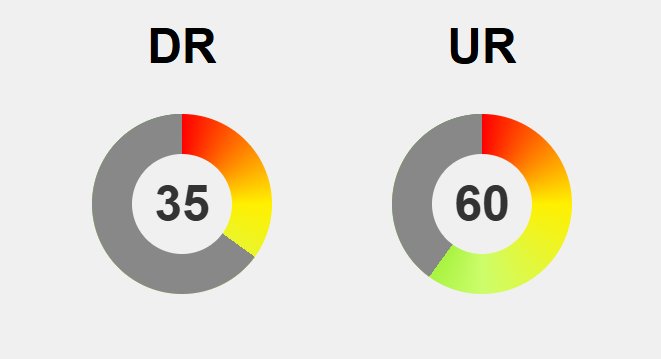Learning to drive marks a pivotal moment in a teen’s journey toward independence, promising freedom yet often accompanied by internal struggles—fear, self-doubt, and anxiety. This emotional rollercoaster involves mastering more than mechanics; it demands trust in oneself amidst unfamiliar, high-pressure situations that can erode confidence. As teens grapple with nerves, safety concerns, and comparisons to peers, their internal conflict can hinder progress and amplify hesitation. However, recent shifts in driver education—integrating emotional resilience, innovative technology like virtual simulators, and supportive environments—are transforming this challenge into growth. The future holds promising advancements such as smarter vehicles and personalized coaching that help normalize nerves and build lasting confidence. Will these evolving approaches finally ease the internal battles teens face behind the wheel, turning nerves into resilience and fostering safer, more self-assured drivers for generations to come?

Navigating the Emotional Road to Teen Driving Confidence
Learning to drive is a major milestone that marks a new chapter of independence for teenagers. It’s an exciting step—one that promises freedom, responsibility, and a sense of grown-up achievement. Yet, beneath that thrill often lies a complex mix of emotions. Teens stepping into the driver’s seat frequently feel eager, but also anxious, overwhelmed, or unsure of themselves. This emotional tug-of-war is a natural part of the process, rooted in the challenge of mastering not just the mechanics of driving but also trusting their own judgment.
As teens begin to navigate the roads, they quickly discover that driving involves more than just steering and braking. It’s about managing vulnerability—facing unfamiliar situations, making split-second decisions, and dealing with the unpredictability of traffic. These factors can trigger self-doubt, especially when they second-guess every move or worry about making mistakes that could have serious consequences. In fact, many teens experience internal conflicts between their desire for independence and their fears of failure or harm.
Safety concerns tend to amplify these feelings of internal struggle. The fear of causing an accident or losing control can make even routine drives feel intimidating. This often leads to cautious or hesitant behavior, which can slow their progress and deepen their insecurity behind the wheel. Such worries are normal, but they can become a barrier if not addressed, creating a cycle of avoidance and self-doubt that hampers confidence.
Internal doubts are also fueled by comparisons—seeing peers handle driving with ease or hearing about others’ successes can make teens feel inadequate. They might believe they’re falling behind or simply aren’t cut out for driving, which chips away at their self-esteem. Recognizing that everyone’s learning journey is different and that nerves are a universal part of growth can help normalize these feelings and foster patience.
Physical reactions often accompany internal stress—racing heart, sweating, trembling—that interfere with concentration. These signs of anxiety can reinforce the perception of losing control, making teens feel even more overwhelmed. Viewing these responses as temporary and manageable, rather than signs of failure, is key to building resilience. Learning to cope with nerves transforms them from obstacles into opportunities for strength.
Overall, learning to drive is about much more than acquiring skills; it’s about developing emotional resilience. Normalizing internal struggles helps teens see nerves and self-doubt as natural steps on the road to confidence. With patience, support, and understanding, these internal challenges can serve as catalysts for growth, ultimately paving the way for safer, more self-assured drivers ready to face the world.
Inside the Mind of the Anxious Teen Driver
Many teens find themselves caught in a whirlwind of emotions when they sit behind the wheel for the first time. Worries about making mistakes—like forgetting to check mirrors, missing a turn, or struggling with parking—can quickly spiral into self-doubt and frustration. Their minds race with questions about their ability to handle complex traffic situations, often feeling overwhelmed by the unfamiliarity of it all. This internal chatter fuels a cycle where anxiety grows, making each drive seem more intimidating than the last.
Safety concerns amplify these feelings. Teens frequently worry about causing an accident or losing control, especially on busy roads or in unpredictable traffic. These fears tend to cause hesitation and over-caution, which can slow their progress and deepen feelings of insecurity. When confidence is low, even routine maneuvers become daunting, and the fear of making a critical mistake can feel paralyzing. Recognizing that these fears are a normal part of learning helps normalize their experience and reduce the stigma of feeling nervous.
The pressure to succeed and meet expectations adds another layer of stress. Teens often feel they need to prove their readiness—whether to parents, instructors, or themselves—leading to perfectionism. Minor errors suddenly feel like failures, increasing internal pressure and making the learning process more stressful. This heightened sense of judgment can cause them to second-guess every decision and doubt their capacity to become competent drivers. Understanding that nerves are common at this stage can help teens develop patience and persistence.
Comparisons with peers or idealized images of confident drivers also play a role. Seeing others handle driving tasks with ease can make teens feel inadequate or slow in their progress. These negative comparisons chip away at their self-esteem, reinforcing feelings of being behind or incapable. Yet, realizing that everyone’s learning journey is unique and that nerves are a universal experience can foster a more compassionate outlook, helping teens see their internal struggles as part of the growth process.
Physical reactions—like increased heart rate, sweating, or trembling—are common signs of internal stress. These bodily responses can interfere with focus, making it harder to concentrate on driving. When teens experience these sensations, it can feel like they’re losing control, which only intensifies their nerves. Viewing these reactions as temporary and manageable is key. Learning simple coping strategies, such as deep breathing or positive visualization, allows teens to calm their minds and regain composure, turning nerves into resilience.

Shifting Perspectives: Building Confidence in Modern Teen Driver Education
Today’s approach to building teen driving confidence combines traditional instruction with innovative tools that better address their emotional and psychological hurdles. While learning the rules of the road—traffic laws, responsible habits, vehicle control—remains essential, there’s now a strong focus on helping teens manage nerves and develop resilience. Driver education programs are shifting from solely technical training to include emotional regulation, recognizing that internal struggles like anxiety and self-doubt are just as crucial to address.
Technology plays a significant role in this evolution. Virtual reality simulators and immersive driving apps allow teens to experience challenging scenarios—like merging onto busy highways or navigating tricky intersections—in a safe, controlled environment. These tools help reduce anxiety by familiarizing teens with difficult situations before they face them in real life. Digital coaching platforms offer personalized feedback, tracking progress and pinpointing specific fears or weaknesses, which helps teens build confidence steadily.
Parents and instructors are also adjusting their roles. Instead of focusing only on driving skills, they now act as emotional supporters, creating a safe space where teens can express fears and setbacks without judgment. Open conversations about doubts and mistakes normalize internal struggles, making teens less afraid of failure. Celebrating small wins—like confidently parking or successfully merging—reinforces their progress and shifts the focus from perfection to growth. This supportive approach fosters a mindset that setbacks are natural parts of development rather than signs of inadequacy.
Society’s attitudes toward teen driving are increasingly recognizing the importance of emotional readiness. Campaigns and policies emphasize mental health alongside skills, promoting patience and understanding. Graduated licensing laws that gradually introduce more complex driving tasks give teens time to build confidence at their own pace. This approach underscores that internal confidence isn’t built overnight but through ongoing support and experience, helping teens feel less pressured and more resilient.
The trend toward a more holistic view of driver training aims to produce not just competent drivers but confident, emotionally prepared individuals. By integrating technology, fostering supportive environments, and emphasizing patience, the focus shifts from just passing a test to cultivating resilience. As these methods become more widespread, future generations of teens will likely face fewer internal struggles, emerging as self-assured drivers ready to handle the road—and the challenges of independence—with confidence and calm.
For parents and teens seeking additional resources, exploring comprehensive driver education programs that emphasize emotional resilience can make a significant difference. These programs often include specialized training and support materials that complement traditional instruction. To learn more about how innovative driver education approaches are shaping confident teen drivers, visit Teen Driver Education.
Practical Strategies to Calm Nerves and Cultivate Confidence
Supporting nervous teens as they learn to drive calls for patience, empathy, and practical strategies that turn anxiety into confidence. Creating a calm, encouraging environment is essential. When teens receive positive reinforcement for small successes—like confidently parking or smoothly merging—they start to trust their abilities. Celebrating these milestones shifts the focus from mistakes to progress, helping them see each step as a victory rather than a setback.
Open, honest communication plays a crucial role. Teens need safe spaces to voice their fears without judgment. Listening actively and asking gentle questions about what makes them nervous fosters trust and reassurance. This dialogue helps identify specific worries, enabling parents and instructors to address concerns directly and normalize the learning journey. When teens realize that feeling anxious is common, they’re more likely to persevere through their struggles.
Practicing in familiar, low-pressure settings can significantly boost confidence. Starting on quiet residential streets or in empty parking lots allows teens to focus on fundamental skills without the stress of heavy traffic. Gradually introducing more complex scenarios—such as busy intersections or highway driving—helps them build resilience step by step. Consistent, short practice sessions reinforce muscle memory and reduce hesitation, transforming nerves into a sense of control and mastery.
Teaching simple calming techniques can be a game-changer during moments of stress. Deep breathing exercises, positive self-talk, or visualizing successful drives help teens manage internal tension. Reminding them that mistakes are part of learning fosters a growth mindset, reducing the fear of failure. Reassuring teens that nerves are temporary and manageable encourages persistence, helping them develop resilience both on and off the road.
Finally, fostering a supportive atmosphere—whether at home or during instruction—turns driving into an opportunity for growth rather than a source of stress. When teens feel safe to make mistakes, ask questions, and celebrate small wins, they develop a positive mindset. This supportive approach transforms nerves into resilience, paving the way for confident, responsible drivers ready to face the road with calm and competence.

Innovating the Future: Technology and Trends Shaping Teen Driving Resilience
The future of teen driving confidence is set to transform significantly, driven by technological innovation and shifting societal attitudes. As vehicles become smarter, features like automatic emergency braking, lane-keeping assist, and adaptive cruise control are designed to reduce human error, making driving safer and less stressful for young drivers. These systems act as safety nets, helping teens feel more secure behind the wheel while they develop their skills gradually. Instead of replacing them, these technologies support their growth, easing anxiety and fostering confidence over time.
Advances in virtual reality and simulation technology are also reshaping driver education. Immersive driving experiences allow teens to practice complex or intimidating scenarios—like merging onto busy highways or navigating tricky intersections—in a controlled environment. This exposure builds familiarity and reduces nerves before they face real traffic. As VR tools become more realistic and accessible, they’re likely to become a standard part of driver training, making the learning process less daunting and more engaging.
Digital coaching apps are evolving to provide personalized feedback, tracking both driving habits and emotional preparedness. These platforms can identify specific fears or weaknesses, offering tailored strategies to build resilience. By integrating data-driven insights, teens can focus on their growth areas, transforming internal doubts into a sense of mastery and confidence. This holistic approach emphasizes mental as well as technical development, preparing them for the unpredictable nature of real-world driving.
Education programs are also shifting toward incorporating mental health and emotional regulation modules. Techniques such as mindfulness, stress management, and self-awareness exercises are increasingly becoming part of driver training curricula. Recognizing that internal doubts don’t vanish overnight, these tools help teens manage nerves and build emotional resilience. The goal is to foster a mindset where setbacks are seen as part of the learning journey, rather than insurmountable obstacles.
Policy and societal attitudes are catching up to these innovations. Graduated licensing laws and public campaigns now emphasize patience and mental readiness alongside technical competence. Providing a gradual exposure to more complex driving situations allows teens to build confidence at their own pace, reducing internal pressure. This supportive environment acknowledges that confidence isn’t just about passing a test but about feeling prepared and resilient in the face of real-world challenges.
Looking even further ahead, autonomous vehicle technology promises to redefine the driving experience for teens. As self-driving systems become more reliable, they could serve as training wheels, helping young drivers gain experience in a safer setting. While fully autonomous vehicles aren’t here yet, their development indicates a future where internal struggles like anxiety might be alleviated by technology that takes some of the pressure off the human driver.
Ultimately, the combination of smart tech, innovative training methods, and a broader societal focus on emotional well-being will create a more supportive environment for teen drivers. Confidence will no longer be solely built through experience but also through understanding, patience, and technological support. This integrated approach promises a new era where internal doubts are normalized, managed, and ultimately transformed into resilience—making the road to independence safer and more empowering for every young driver.






